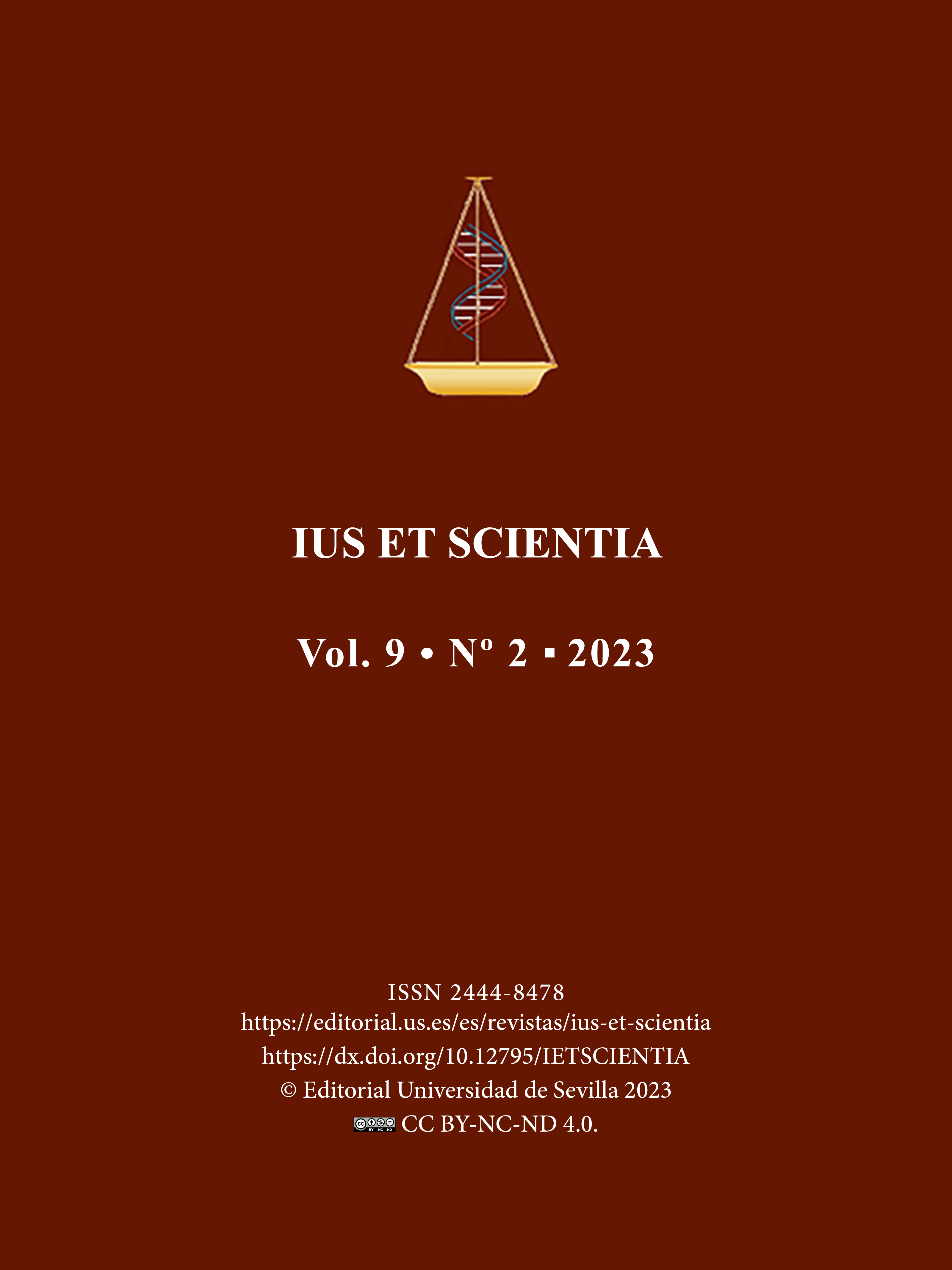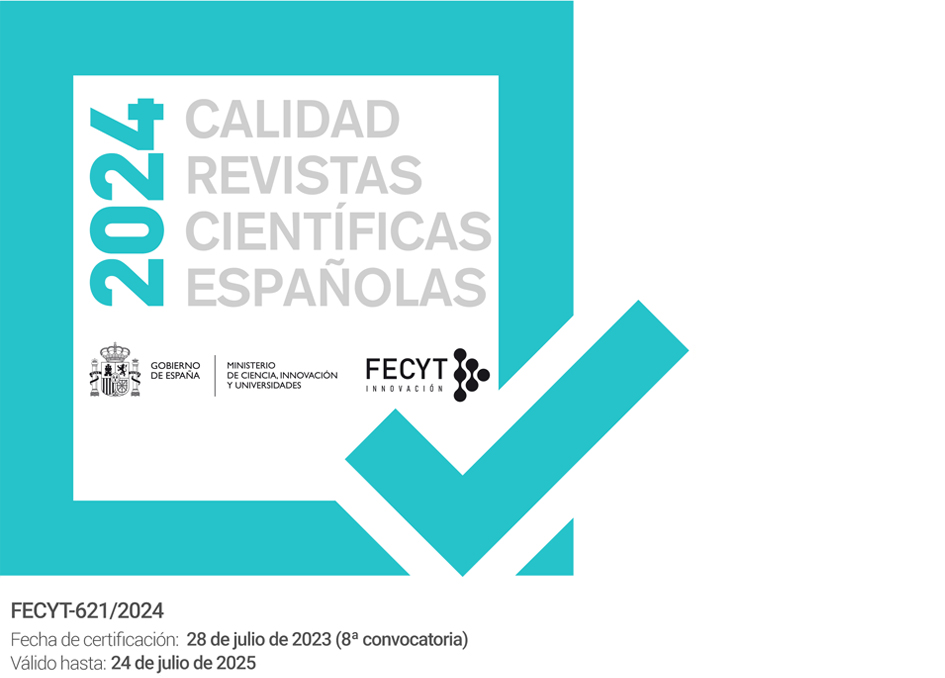El papel de la inteligencia artificial en la lucha contra el ciberterrorismo
DOI:
https://doi.org/10.12795/IESTSCIENTIA.2023.i02.10Keywords:
Cyber terrorism, Artificial intelligence technology, Combating, PreventionAbstract
This study aims at identifying the effects of technology on crime, as it is a double-edged sword, in which it can help in committing crimes, however it also contributes to preventing, detecting and suppressing them. Besides, technological development has had two prominent effects, one of them is negative, which was manifested in the dangers that threaten the security of states and individuals, particularly the phenomenon of terrorism, whose danger has steadily increased with technological and technical progress.
Therefore, the method of managing terrorism has become more sophisticated, as terrorist groups using cyberspace to launch attacks using the Internet and complex programs, thus terrorism has shifted from traditional based on hard power to cyber terrorism based on soft power. As for the positive impact of technological development, it is represented in the artificial intelligence technology used in the prevention and control of crimes, including cyber terrorism crimes.
Downloads
References
ABDEL-SADIQ, A. (2009). Cyber Terrorism: The Power in International Relations, a New Pattern and a Contrasting App. Cairo: Center for Political and Strategic Studies.
AL KAYALI, A. W. (1994). Political Encyclopedia, part 7. Beirut: the Arab Foundation for Studies and Publishing.
AL-SHARQAWI, M. A. (1996). Artificial Intelligence and Neural Networks (éd. 1). Egypt: The Modern Egyptian Office Press
AL-ZUBAIDI. (1987). Taj al-’arūs min jawāhir al-Qāmūs (éd. 2). (A. Hilali, Éd.) Kuwait.
AL-HAMDANI, B. H. (2008). Al-Bakry, Riyad Hamza, The reality of development in light of scientific progress and the concept of artificial intelligence. Journal of Comprehensive Management Accounting, College of Management and Economics.
AL-HUWAIDI, O. (2011). Combating Terrorism Crimes. Amman: Dar Wael Li Al Nasher.
AL-MAWASH, D. J. (2017). The Crime of Information Espionage (a comparative study) (éd. 1). Egypt: Longitudinal Center for Scientific Studies and Research.
AL-MUKARRAMAH, T. d. (5-10/1/2002). (Makkah Al-Mukarramah: the Islamic Fiqh Council of the Muslim World League in its sixteenth session.
AL-SALMI, A. A.-R. (1999). Information Systems and Artificial Intelligence. Amman: Dar Al-Manhaj for Publishing and Distribution.
ALEJANDRO, C. A. (2012). The Empire of Terror (éd. 1). (W. Ibrahim, Trad.) Beirut: Publications Company for Distribution and Publishing.
BANA, D. (2020, January 14). Consulté le November 16, 2021, sur https://mawdoo3.com
BEN AMROUCHE, F. (2018). Electronic Terrorism: A Study in Conceptual and Dimensional Problems. Algerian Journal of Social and Human Sciences, 8(2).
CAROLE, M. (2019). Laurent Guille, Intelligence Artificielle Et Cybersécurité. Wavestone.
DILEK, S., ÇAKIR, H., & AYDIN, M. (2015). Applications of Artificial Intelligence Techniques to Combating Cyber Crimes: A Review. International Journal of Artificial Intelligence & Applications (IJAIA), 6(1).
HAIDER, S. A.-B., & Dr. MAHMOUD, H. A.-H. (2014). Technology and Information Systems in Contemporary Organizations “A Technological Administrative Perspective.” Cairo: Published by Mahmoud Hassan Jomaa Foundation.
IBN FARIS. (1999). A Dictionary of Language Standards (éd. 1). Beirut: Dar al-Kotob al-Ilmiya.
KATHLEEN, M. (2019, October 9). Predicting Attacks: Opportunities and Risks of Using Artificial Intelligence in. Récupéré sur https://futureuae.com/ar/Mainpage/Item/5022/%D8%A7%D9%84%D8%AA%D9%86 %D8%A8%D8%A4-%D8%A8%D8%A7%D9%84%D9%87%D8%AC%D9%85%D8%A7%D8%AA.
KATHLEEN, M. (August 2019). Artificial Intelligence Prediction And Counterterrorism. Britain: Chattam House.
KHAZA’LEH, S. (2015, August 15). The Characteristics of Artificial Intelligence. Consulté le November 16, 2021, sur https://mawdoo3.com.
MUSTAFA, M. M. (2009). Electronic Terrorism (legal, security, psychological, and social study) (éd. 1). Cairo: Egyptian National Books and Documents House.
OLIVIER, T. (2017, June 6). Artificial Intelligence Will Save Us From Cyberterrorism. Consulté le August 12, 2020, sur https://Www.Telerama.Fr/Medias/L-Intelligence-Artificielle-Va-Nous-Sauver-Du-Terrorisme‘159806.Php.
sans référence. (s.d.).
SHADI, A.-W., Al-GHITAN, I., & YAHYA, S. (s.d.). Opportunities and Threats of Artificial Intelligence in the Next Ten Years.
SHAFIQ, N. (2016). The Impact of Cyber Threats on International Relations: A Study in the Dimensions of Cyber Security (éd. 1). Cairo: al-Maktab al-‘Arabī lil-Ma‘ārif.
SHARQI, S., & Gharib, H. (2020). Electronic Terrorism and the Transformation of the Concept of Power. Al-Bahith Journal for Academic Studies,, 7(2).
SHEIKH, H. (2018). The role of artificial intelligence in managing the electronic customer relationship of the Algerian People’s Credit CPA. Academic Journal of Human and Social Studies,(20).
SULEIMAN, Y. A.-F. (s.d). Artificial intelligence. Syria: Al-Badr Magazine.
The Arabic Language Academy. (s.d). The Intermediate Lexicon. (I. Mustafa, & others, Éds.) Turkey: the Islamic Library.
TOLBA, D., & FAHMY, M. (2005). Computer Knowledge Department. Alexandria: Modern Egyptian Office Press.
VERRE, D. (2011). Cyberspace And Actors Of Cyberconflict (Edition Bermes Science ed.). Paris: La Voisier.
VICTOR, M.-S., KENNETH, C., & BIG, D. (2013). A Revolution That Will Transform How We Live. Work And Think (London, John Murray).
WAQUAF, A.A. (2006). Combating Terrorism Between Politics and Law. Algeria: Dar Al-Kheldonia Publishing and Distribution.
Published
How to Cite
Issue
Section
License
Copyright (c) 2023 Nadjia Madaoui

This work is licensed under a Creative Commons Attribution-NonCommercial-ShareAlike 4.0 International License.
Those authors being published in this journal agree to the following terms:
- Authors retain their copyright and they will guarantee to the journal the right of first publication of their work, which will be simultaneously subject to license recognition by Creative Commons that allows others to share such work provided it is stated the author’s name and his first publishing in IUS ET SCIENTIA.
- Authors may take other non-exclusive distribution license agreements version of the published work (e.g. deposit in an institutional digital file or publish it in a monographic volume) provided it is stated the initial publication in this journal.
- It is allowed and encouraged that Author s disseminate their work via the Internet (e. g. institutional digital files or on their website) prior to and during the submission process, which can lead to interesting exchanges and to increase citation of the published work.
- Abstract 132
- PDF 383
- HTML 449





